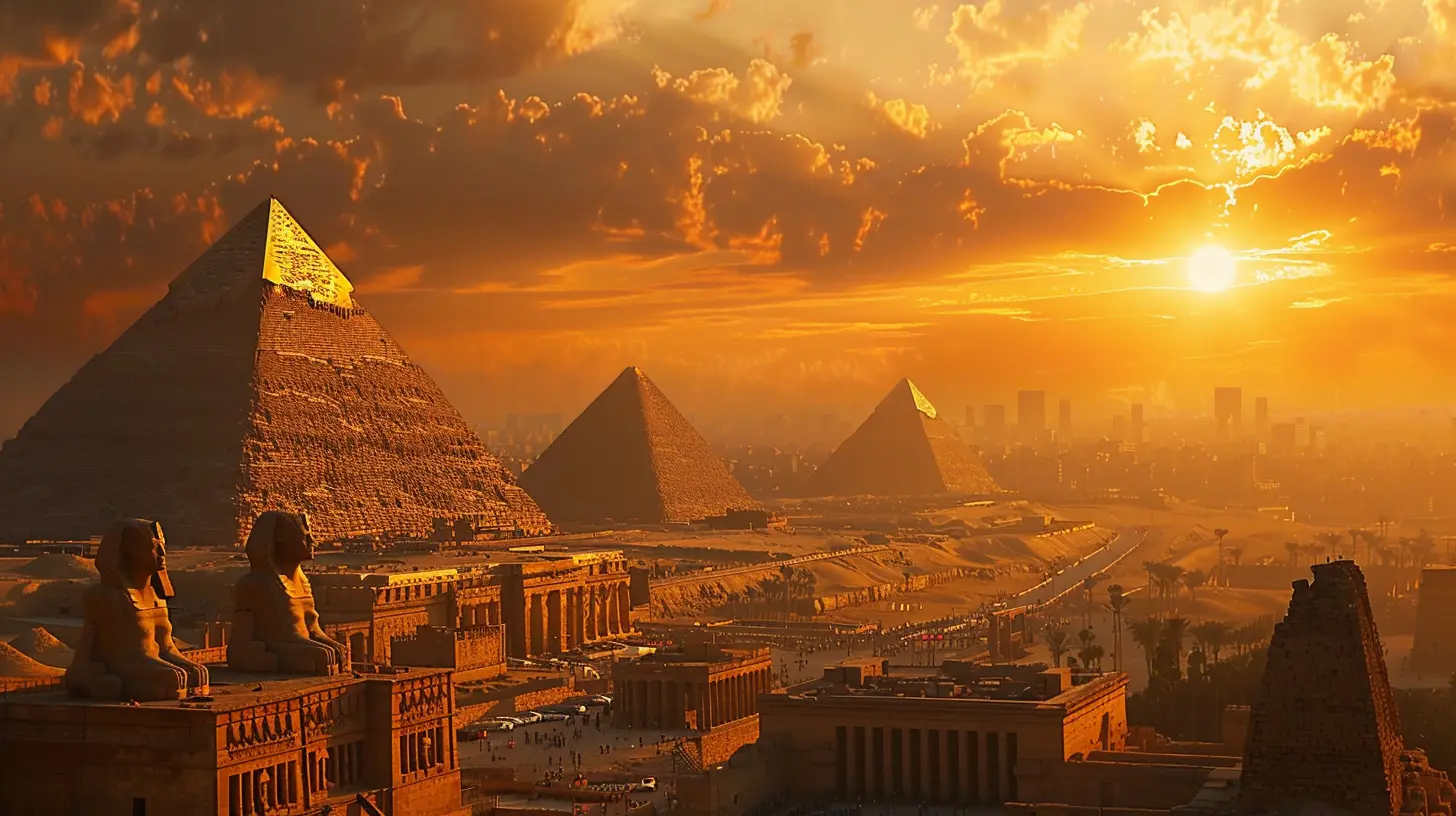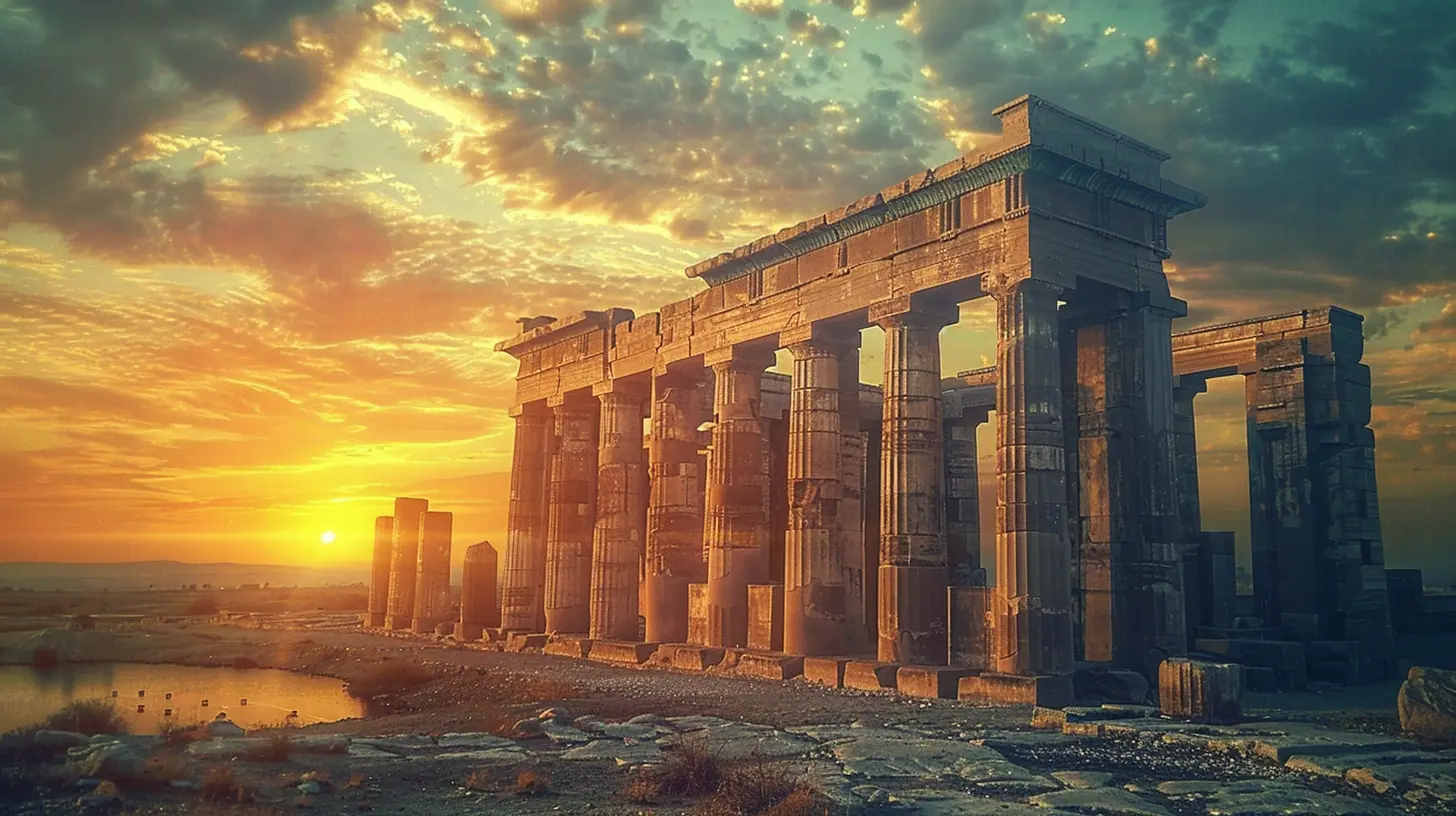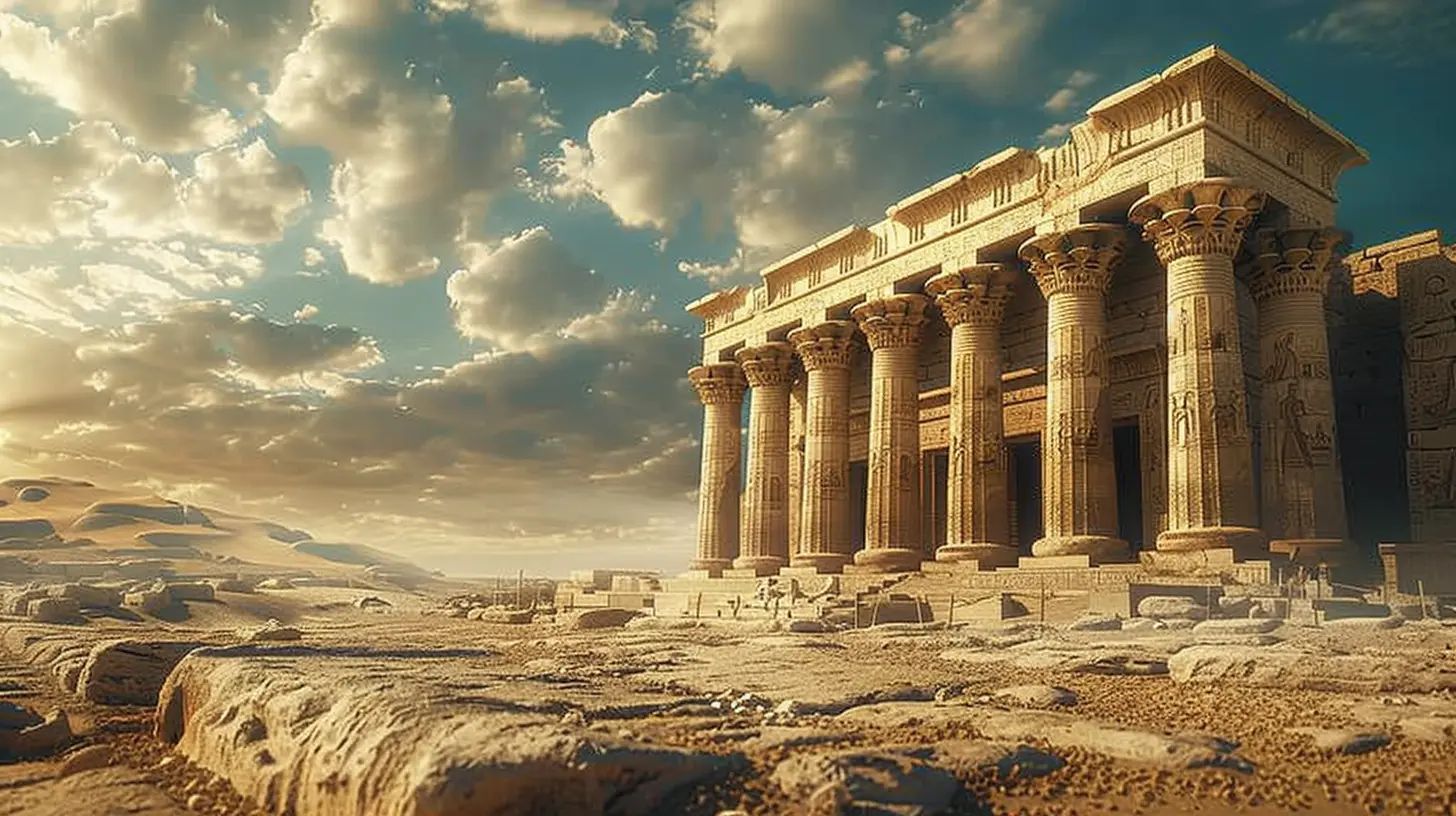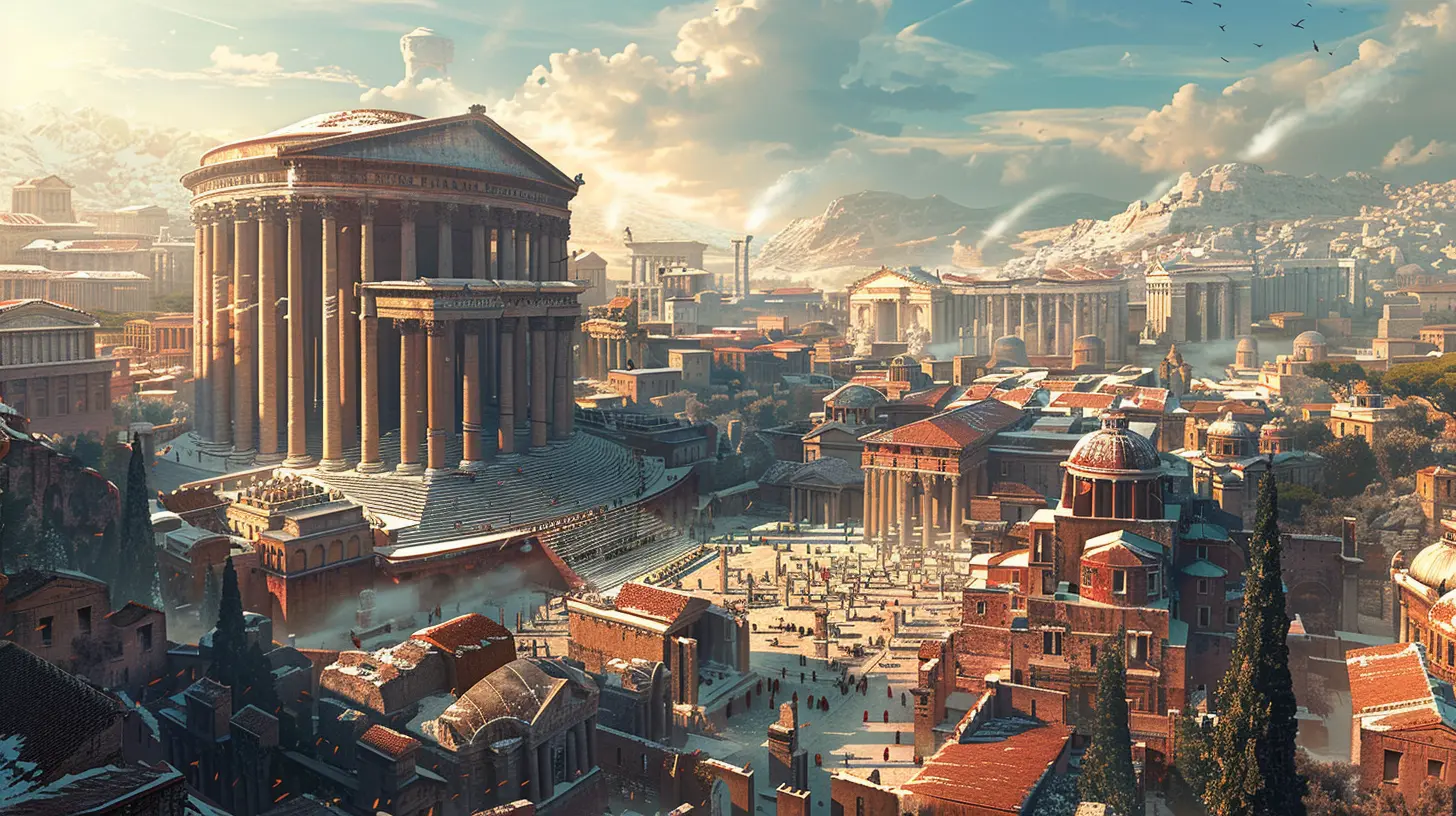Tracing the Steps of Ancient Civilizations
19 April 2025
Ever wonder what it would be like to walk in the footsteps of ancient kings, warriors, and philosophers? Well, you don’t need a time machine or a fancy Hollywood budget to do it—just a sturdy pair of shoes, a sense of adventure, and maybe some sunscreen (because history is better without sunburn).
From the towering pyramids of Egypt to the lost cities of the Americas, our world is packed with remnants of civilizations that thrived long before WiFi, social media, and overpriced coffee. Let’s take a journey through time and trace the steps of some of history’s most fascinating ancient societies. 
1. Egypt: The Land of Pharaohs and Really Big Triangles
If ancient civilizations had an ultimate celebrity status, Egypt would be the Beyoncé of the historical world. The Egyptians built pyramids so massive that we’re still scratching our heads wondering how they pulled it off without bulldozers or modern machinery.The Pyramids at Giza
The Pyramids of Giza are the headliners of Egypt’s ancient attractions. The Great Pyramid, built for Pharaoh Khufu, was once the tallest man-made structure in the world. Imagine stacking up millions of giant stone blocks without cranes or forklifts—talk about commitment!And let’s not forget the Sphinx, the legendary creature with the body of a lion and the head of a pharaoh. It’s basically ancient Egypt’s version of a meme—everyone has theories about what it means, but nobody is 100% sure.
Valley of the Kings
If pyramids aren’t dramatic enough for you, head over to the Valley of the Kings, where pharaohs decided that underground tombs were the way to go. This is where King Tutankhamun’s tomb was discovered, filled with treasures, mysteries, and probably a few mummified "Do Not Disturb" signs.
2. Greece: Where Democracy and Drama Began
If you've ever debated politics or binge-watched a tragic love story, you have ancient Greece to thank (or blame). Greece was the birthplace of democracy, philosophy, and theater—not to mention the Olympics, where running around half-naked was considered a sport.Athens and the Acropolis
The Acropolis is basically the VIP section of ancient Greece. Sitting on a hill, it boasts the Parthenon, a temple dedicated to Athena, the goddess of wisdom. It’s a stunning architectural marvel, even though time, war, and pollution have tried their best to ruin it.Delphi: The Ancient Google Search Engine
Before Siri or Alexa, people went to the Oracle of Delphi for answers. This mysterious priestess would inhale some interesting vapors, mutter cryptic predictions, and somehow shape the course of history—making her the original influencer.
3. Rome: All Roads (and Legends) Lead Here
Ah, Rome—the city that gave us Julius Caesar, gladiators, and a serious obsession with togas. If ancient civilizations had a Hall of Fame, Rome would have an entire wing dedicated to its achievements.The Colosseum: The OG Sports Stadium
The Colosseum was the place to be for bloody entertainment. Forget football—this arena hosted gladiatorial battles, where warriors fought to the death (or, if lucky, to the loud applause of the crowd). Fun fact: It could hold up to 50,000 spectators, which means ancient Romans had stadium seating figured out long before modern sports fans.Pompeii: The City That Hit the Pause Button
In 79 AD, Mount Vesuvius erupted and turned Pompeii into a real-life time capsule. Everything from homes to graffiti (yes, Romans had graffiti) was frozen in time by volcanic ash. Walking through Pompeii today feels like stepping into a history book—except with better weather.
4. The Mayans: Mathematicians, Astronomers, and Calendar-Makers
While some civilizations were busy conquering, the Maya were busy calculating. From advanced mathematics to complex calendars, these guys were the original data analysts of the ancient world.Chichen Itza: More Than Just a Fancy Name
Chichen Itza is home to the massive El Castillo pyramid, also known as the Temple of Kukulcán. During the spring and autumn equinoxes, the sun casts a shadow that looks like a serpent slithering down the steps—proof that the Mayans were not only great architects but also masters of special effects.Tikal: The Jungle’s Best-Kept Secret
Tikal is like the VIP section of the ancient Mayan world, hidden deep in the Guatemalan jungle. Climbing one of its massive pyramids feels like ascending into history itself—if you can make it past the howler monkeys, who sound like dinosaurs from a sci-fi movie.5. The Incas: Masters of the Mountains
While other civilizations were busy settling in convenient locations, the Incas built their empire high up in the Andes Mountains because, apparently, they loved a good challenge.Machu Picchu: The Lost City of the Incas
Machu Picchu is the crown jewel of Incan architecture, perched so high in the mountains that even llamas seem impressed. For centuries, this city remained "lost" to the outside world until an explorer stumbled upon it in 1911. Today, it’s one of the most iconic travel destinations, making everyone question their gym endurance as they hike to reach it.The Incan Road System: Highways Before Highways Were Cool
The Incas built over 24,000 miles of roads through mountains, valleys, and jungles—with no cars, no Google Maps, and no gas stations. Talk about commitment! Their impressive road system connected their vast empire and is still visible in many places today.6. Mesopotamia: The OG Civilization
If ancient civilizations were a high school, Mesopotamia would be the valedictorian. Located between the Tigris and Euphrates Rivers, this region was the birthplace of writing, laws, and epic tales about flood stories (Noah wasn’t the first one to write about a big flood, by the way).Babylon: Home of the Hanging Gardens (Probably)
Babylon was once a powerhouse of culture, science, and architectural wonders. It had the famous (yet possibly mythical) Hanging Gardens, which were said to be a lush paradise of greenery cascading from terraces—a kind of ancient skyscraper covered in plants.The Code of Hammurabi: Judge Judy, Ancient Edition
Ever heard of "an eye for an eye"? That saying comes from the Code of Hammurabi, one of the earliest legal codes. While some of the laws were a bit harsh (chop off a hand for stealing?!), this was the first real attempt at creating a structured legal system.Conclusion: History is Hilariously Impressive
Tracing the steps of ancient civilizations is like scrolling through an old-school Instagram feed, except instead of selfies, you get pyramids, temples, and gladiator arenas. These civilizations built, ruled, and innovated long before modern technology—proving that humans have always been brilliant, creative, and sometimes a little dramatic.So, next time you find yourself complaining about slow internet, just remember: the Egyptians built the pyramids without a single WiFi signal. Respect.
all images in this post were generated using AI tools
Category:
Historical SitesAuthor:

Pierre McKinney
Discussion
rate this article
4 comments
Thalwen Kim
Exploring ancient civilizations offers more than just a glimpse into the past; it reveals the foundations of our modern world. Each ruin and artifact tells a story, connecting us to humanity's shared journey. Embracing these historical sites enriches travel, fostering a deeper appreciation for culture, resilience, and innovation through time.
May 5, 2025 at 4:05 AM

Pierre McKinney
Thank you for your thoughtful insight! Ancient civilizations indeed shape our understanding of the present and deepen our appreciation for human history.
Oscar Jordan
This article beautifully captures the essence of exploring ancient civilizations. The recommended sites are intriguing, and the historical context adds depth to each location. I particularly appreciated the tips on how to respectfully engage with local cultures. Looking forward to planning my own journey through history!
April 27, 2025 at 3:17 PM

Pierre McKinney
Thank you for your thoughtful comment! I'm glad you found the article inspiring and the tips helpful for your journey. Happy travels through history!
Astra Hubbard
In the whispers of ruins, time dances with the past, Each stone a story, each path a cast. From temples to tombs, where history weaves, Travel the echoes, and believe what achieves. In ancient footprints, the world still breathes.
April 24, 2025 at 3:35 PM

Pierre McKinney
Thank you for beautifully capturing the essence of ancient civilizations and their enduring stories!
Andrew Jennings
Exploring ancient civilizations sounds incredible! Can't wait to uncover their secrets and rich histories! 🌍✨
April 23, 2025 at 4:11 PM

Pierre McKinney
Thank you! I'm excited to share the wonders of these ancient cultures with you! 🌟



